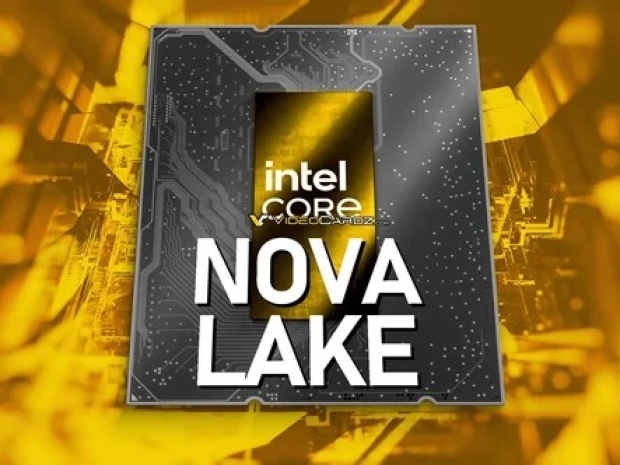After abandoning its earlier Halo-class Arrow Lake plans, Intel seems determined to revive the concept with a more integrated and powerful platform arriving under the Nova Lake banner.
According to serial leaker @jaykihn0, the Nova Lake CPU family, due sometime next year, will span the usual mobile and desktop segments. Nova Lake AX will be the enthusiast outlier, targeting heavy duty laptops and possibly desktops if the design allows it. This points to high TDP workstation grade hardware with plenty of graphical muscle to challenge AMD’s upcoming Strix Halo refresh.
Nova Lake standard CPUs are shaping up as monsters. Expect configurations topping out at 52 cores, with 16 performance cores based on the Coyote Cove architecture, 32 efficiency cores built on Arctic Wolf, plus an additional four ultra low power cores for background tasks. Each chip will feature dual compute tiles with eight P cores and 16 E cores each, while the four LP E cores will sit on a dedicated low power island.
Nova Lake AX is unlikely to change that core layout but it will add more to feed the GPU. Extra cache on a dedicated tile is almost certain, similar to the Adamantine cache approach Intel has tested in the past. This will ensure the integrated GPU has enough bandwidth and latency advantages to compete with AMD’s top end designs.
The iGPU itself will be much larger than the standard Nova Lake parts. Where the normal lineup may carry around 12 Xe3 cores based on the Celestial architecture, Nova Lake AX could scale up to 20 or even 24 Xe3 cores. This would mirror AMD’s approach with Strix Halo APUs, which integrate large RDNA 3.5 GPU blocks for heavy compute and gaming workloads.
Packaging will be a critical differentiator. Intel is expected to rely heavily on its Foveros 3D stacking technology to combine the CPU, GPU and cache tiles in a single package. Reports also suggest that Nova Lake AX may borrow techniques from Intel’s experimental “X3D like” CPU projects, potentially stacking extra memory or cache to give the iGPU workstation class throughput.
This kind of integration will not come with modest power draw. Nova Lake AX is clearly intended for enthusiast grade platforms such as AI workstations, mobile creator machines and high end gaming laptops that can handle the thermal load. There is also a possibility that Intel will adapt the design for desktop, especially for compact high performance systems that can benefit from a large iGPU without needing a discrete card.
Do not expect to see Nova Lake AX before 2026 at the very earliest. A realistic release window is likely 2027 as Intel focuses first on its standard Nova Lake S, HX, H and U series CPUs. By the time Nova Lake AX is ready, AMD will likely have its Zen 6 based Halo successors ready, possibly with RDNA 4 or the rumoured UDNA graphics architecture.




